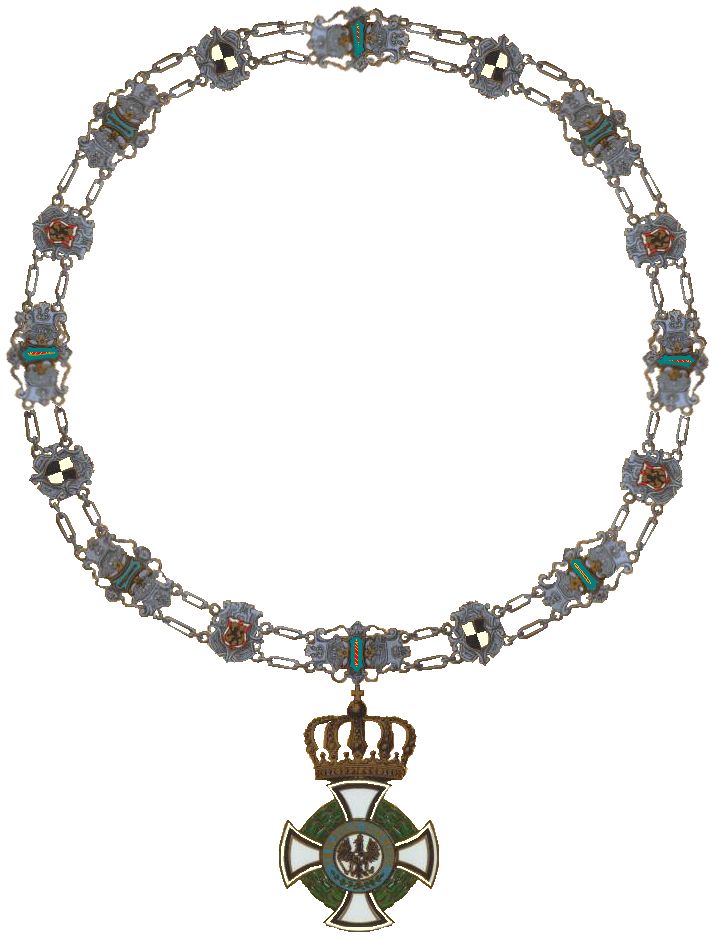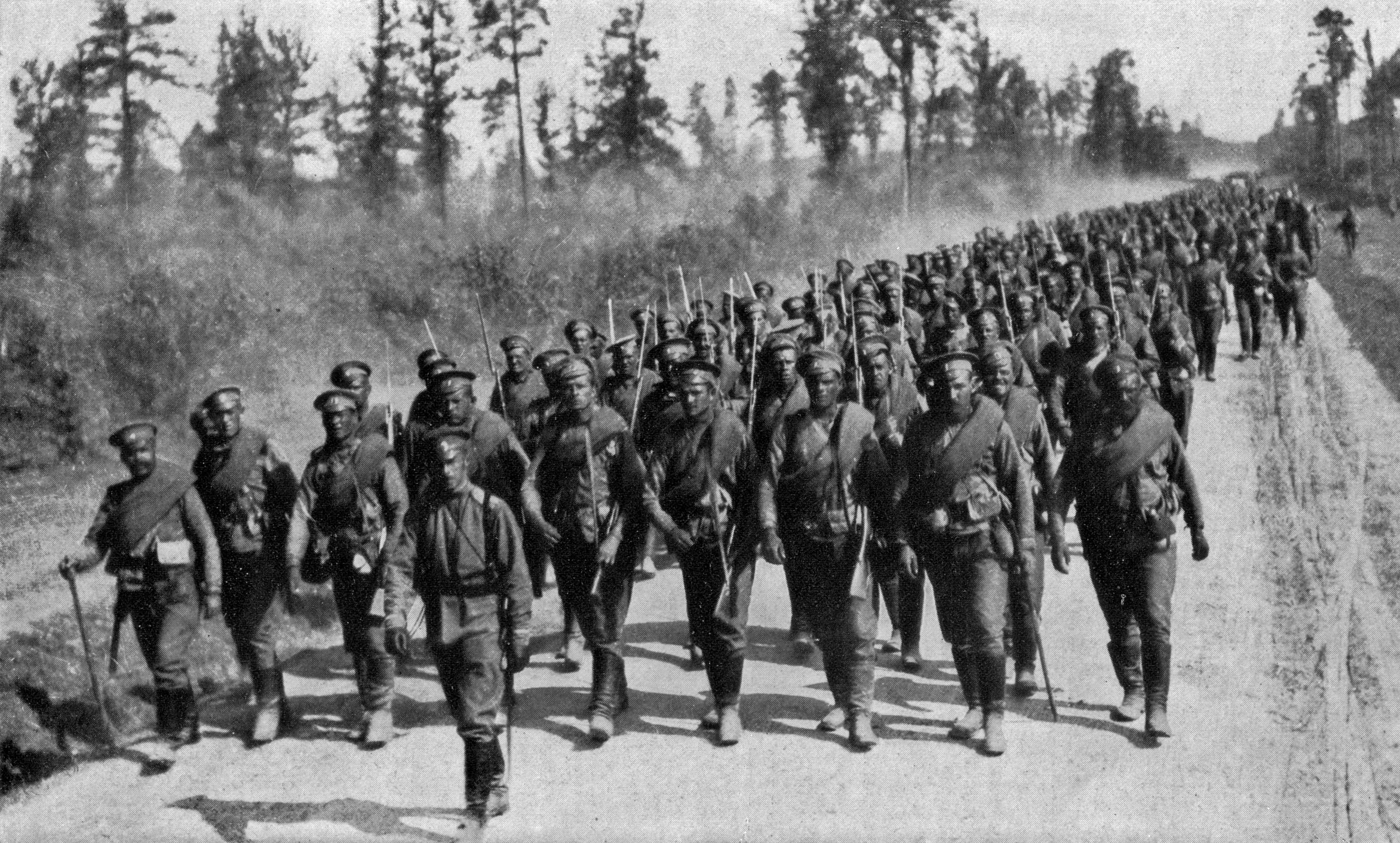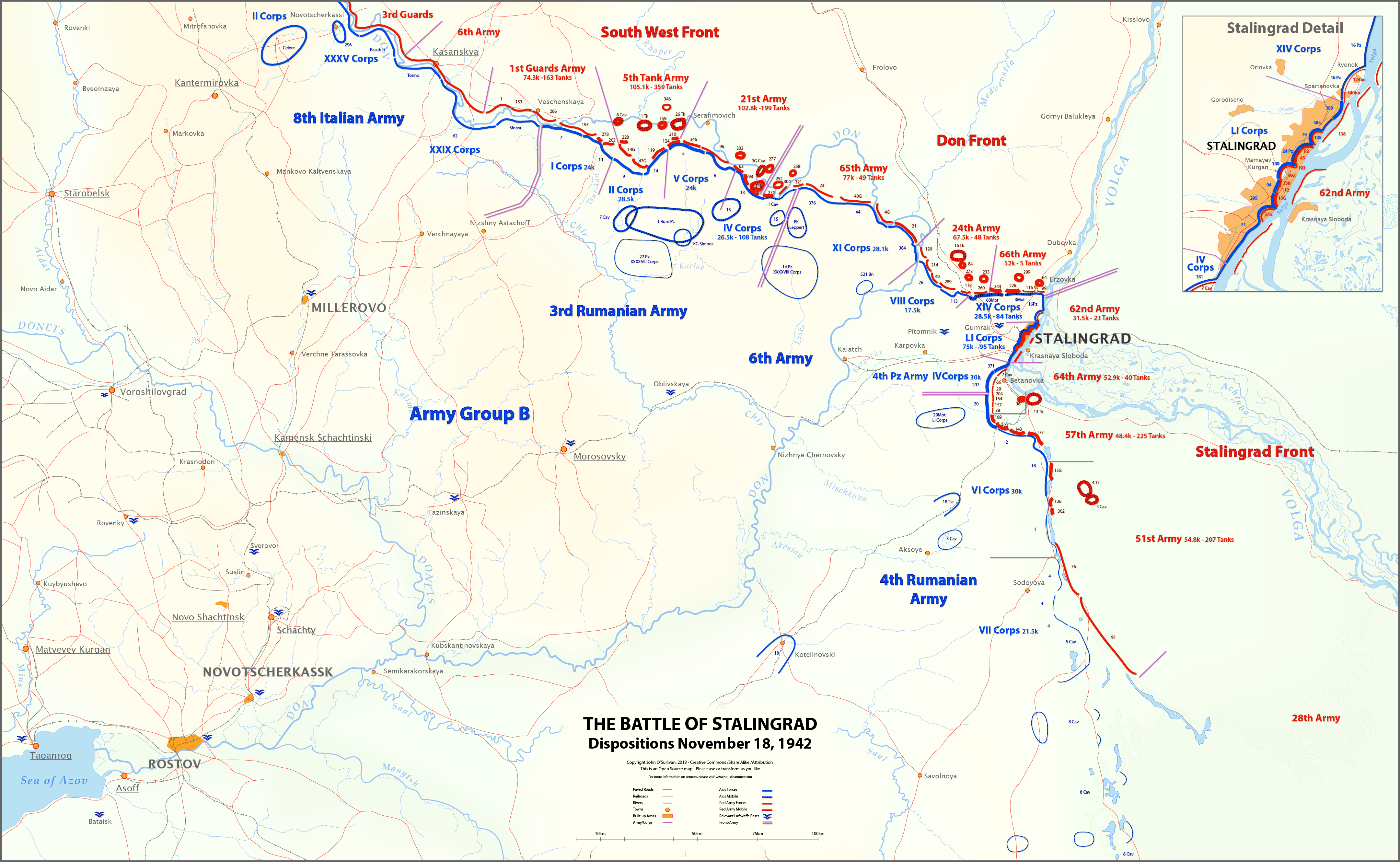|
Walter Heitz
Walter Heitz (8 December 1878 – 9 February 1944) was a German general (''Generaloberst'') in the Wehrmacht during World War II. He served as President of the Reichskriegsgericht, Reich Military Court and commanded part of the 6th Army (Wehrmacht), 6th Army in the Battle of Stalingrad. A decorated World War I officer and supporter of Nazism, Heitz advanced rapidly under the Third Reich. In 1936, he became the president of the Reich Military Court. At the age of 60, Heitz took command of the VIII Army Corps (Wehrmacht), VIII Army Corps and participated in the Invasion of Poland, the Battle of France and Operation Barbarossa, the invasion of the Soviet Union. Heitz continued to command the VIII Army Corps as part of the 6th Army (Wehrmacht), 6th Army in the Battle of Stalingrad. The 6th Army was encircled within the city after Operation Uranus, the Soviet counter-offensive in Stalingrad, and eventually destroyed. Heitz surrendered the central pocket of German forces in Stalingrad o ... [...More Info...] [...Related Items...] OR: [Wikipedia] [Google] [Baidu] |
Reichskriegsgericht
The Reichskriegsgericht (, RKG; ) was the highest German military law, military court in Germany between 1900 and 1945. Legal basics and responsibilities After the Kingdom of Prussia, Prussian-led Unification of Germany, the German Empire with effect from 1 October 1900 had established a particular court-martial jurisdiction () to try soldiers of the German Army (German Empire), German Army, with the ''Reichsmilitärgericht'' (RMG) as the supreme court. The presiding judge in the rank of a general or admiral was appointed directly by the German Emperor. From 1910, the court had its seat in a newly erected prestigious building in Charlottenburg. During World War I, German military law enabled military courts to try not only soldiers but also civilians held to have violated the military law. In the post-war Weimar Republic (1919-1933), the separate jurisdiction for military personnel was abolished by the law of 17 August 1920, based on Article 106 of the Weimar Constitution. After ... [...More Info...] [...Related Items...] OR: [Wikipedia] [Google] [Baidu] |
Operation Barbarossa
Operation Barbarossa was the invasion of the Soviet Union by Nazi Germany and several of its European Axis allies starting on Sunday, 22 June 1941, during World War II. More than 3.8 million Axis troops invaded the western Soviet Union along a front, with the main goal of capturing territory up to a line between Arkhangelsk and Astrakhan, known as the A-A line. The attack became the largest and costliest military offensive in history, with around 10 million combatants taking part in the opening phase and over 8 million casualties by the end of the operation on 5 December 1941. It marked a major escalation of World War II, opened the Eastern Front—the largest and deadliest land war in history—and brought the Soviet Union into the Allied powers. The operation, code-named after the Holy Roman Emperor Frederick Barbarossa ("red beard"), put into action Nazi Germany's ideological goals of eradicating communism and conquering the western Soviet Union to repopulate it w ... [...More Info...] [...Related Items...] OR: [Wikipedia] [Google] [Baidu] |
House Order Of Hohenzollern
The House Order of Hohenzollern ( or ') was a dynastic order of knighthood of the House of Hohenzollern awarded to military commissioned officers and civilians of comparable status. Associated with the various versions of the order were crosses and medals which could be awarded to lower-ranking soldiers and civilians. History The Princely House Order of Hohenzollern originated in 1841, by joint decree of Prince Konstantin of and Prince Karl Anton of . These two principalities in southern Germany were Catholic collateral lines of the House of Hohenzollern, cousins to the Protestant ruling house of Prussia. On 23 August 1851, after the two principalities had been annexed by Prussia, the order was adopted by the Prussian branch of the house. Also, although the two principalities had become an administrative region of the Prussian kingdom, the princely lines continued to award the order as a house order. The Prussian version was then known as the Royal House Order of Hohenzollern (' ... [...More Info...] [...Related Items...] OR: [Wikipedia] [Google] [Baidu] |
Western Front (World War I)
The Western Front was one of the main Theatre (warfare), theatres of war during World War I. Following the outbreak of war in August 1914, the Imperial German Army, German Army opened the Western Front by German invasion of Belgium (1914), invading Luxembourg and Belgium, then gaining military control of important industrial regions in Third Republic of France, France. The German advance was halted with the First Battle of the Marne, Battle of the Marne. Following the Race to the Sea, both sides dug in along a meandering line of fortified trench warfare, trenches, stretching from the North Sea to the Swiss frontier with France, the position of which changed little except during early 1917 and again in 1918. Between 1915 and 1917 there were several offensives along this Front (military), front. The attacks employed massive artillery bombardments and massed infantry advances. Entrenchments, machine gun emplacements, barbed wire, and artillery repeatedly inflicted severe casualties ... [...More Info...] [...Related Items...] OR: [Wikipedia] [Google] [Baidu] |
Eastern Front (World War I)
The Eastern Front or Eastern Theater, of World War I, was a theater (warfare), theater of operations that encompassed at its greatest extent the entire frontier between Russian Empire, Russia and Kingdom of Romania, Romania on one side and Austria-Hungary, Kingdom of Bulgaria, Bulgaria, the Ottoman Empire, and German Empire, Germany on the other. It ranged from the Baltic Sea in the north to the Black Sea in the south, involved most of Eastern Europe, and stretched deep into Central Europe. The term contrasts with the Western Front (World War I), Western Front, which was being fought in Belgium and French Third Republic, France. Unlike the static warfare on the Western Front, the fighting on the geographically larger Eastern Front was maneuver warfare, more dynamic, often involving the flanking and encirclement of entire formations, and resulted in over 100,000 square miles of territory becoming occupied by a foreign power. At the start of the war Russia launched offensives agai ... [...More Info...] [...Related Items...] OR: [Wikipedia] [Google] [Baidu] |
Russian Invasion Of East Prussia (1914)
The Russian invasion of East Prussia occurred during World War I, lasting from August to September 1914. As well as being the natural course for the Russian Empire to take upon the declaration of war on the German Empire, it was also an attempt to focus the Imperial German Army on the Eastern Front, as opposed to the Western Front. Despite superiority over the Germans in numbers, the invading Imperial Russian Army spread its forces thin and was defeated in the battles of Tannenberg and the Masurian Lakes, resulting in a complete strategic collapse of the Russian plan of war. The Germans also seemed to have weak cooperation among the troops and disagreements in the generals. The victory in East Prussia inspired too much self-confidence, which led to defeats at Warsaw and Lodz. The shock of the invasion served to assist the German war effort. According to Alexander Watson "Outrage at the violation of national territory and Tsarist atrocities strengthened German solidarit ... [...More Info...] [...Related Items...] OR: [Wikipedia] [Google] [Baidu] |
Operation Uranus
Operation Uranus () was a Soviet 19–23 November 1942 strategic operation on the Eastern Front of World War II which led to the encirclement of Axis forces in the vicinity of Stalingrad: the German Sixth Army, the Third and Fourth Romanian armies, and portions of the German Fourth Panzer Army. The Red Army carried out the operation at roughly the midpoint of the five-month long Battle of Stalingrad, aiming to destroy German forces in and around Stalingrad. Planning for Operation Uranus had commenced in September 1942, and developed simultaneously with plans to envelop and destroy German Army Group Center ( Operation Mars) and German forces in the Caucasus. Due to the length of the front lines created by the German 1942 summer offensive, which had aimed at taking the Caucasus oil fields and the city of Stalingrad, German and other Axis forces were over-extended. The German decision to transfer several mechanized divisions from the Soviet Union to Western Europe exa ... [...More Info...] [...Related Items...] OR: [Wikipedia] [Google] [Baidu] |
Nazism
Nazism (), formally named National Socialism (NS; , ), is the far-right totalitarian socio-political ideology and practices associated with Adolf Hitler and the Nazi Party (NSDAP) in Germany. During Hitler's rise to power, it was frequently referred to as Hitler Fascism () and Hitlerism (). The term " neo-Nazism" is applied to other far-right groups with similar ideology, which formed after World War II, and after Nazi Germany collapsed. Nazism is a form of fascism, with disdain for liberal democracy and the parliamentary system. Its beliefs include support for dictatorship, fervent antisemitism, anti-communism, anti-Slavism, anti-Romani sentiment, scientific racism, white supremacy, Nordicism, social Darwinism, homophobia, ableism, and the use of eugenics. The ultranationalism of the Nazis originated in pan-Germanism and the ethno-nationalist '' Völkisch'' movement which had been a prominent aspect of German ultranationalism since the late 19th centu ... [...More Info...] [...Related Items...] OR: [Wikipedia] [Google] [Baidu] |
6th Army (Wehrmacht)
The 6th Army () was a field army of the German Army during World War II. It is widely known for its defeat by and subsequent surrender to the Red Army at the Battle of Stalingrad on 2 February 1943. It committed war crimes at Babi Yar while under the command of Field Marshal Walther von Reichenau during Operation Barbarossa. The 6th Army was reformed in March 1943, and participated in fighting in Ukraine and later Romania, before being almost completely destroyed in the Second Jassy-Kishinev Offensive in August 1944. Following this it would fight in Hungary, attempting to relieve Budapest, and subsequently retreating into Austria in the Spring of 1945. 6th Army surrendered to US Army forces on 9 May 1945. Western campaigns The 6th Army was formed on 10 October 1939 with General Walther von Reichenau in command through the redesignation of the 10th Army that had fought during the Invasion of Poland. During the invasion of the Low Countries the 6th Army saw active service ... [...More Info...] [...Related Items...] OR: [Wikipedia] [Google] [Baidu] |
Wehrmacht
The ''Wehrmacht'' (, ) were the unified armed forces of Nazi Germany from 1935 to 1945. It consisted of the German Army (1935–1945), ''Heer'' (army), the ''Kriegsmarine'' (navy) and the ''Luftwaffe'' (air force). The designation "''Wehrmacht''" replaced the previously used term (''Reich Defence'') and was the manifestation of the Nazi regime's efforts to German rearmament, rearm Germany to a greater extent than the Treaty of Versailles permitted. After the Adolf Hitler's rise to power, Nazi rise to power in 1933, one of Adolf Hitler's most overt and bellicose moves was to establish the ''Wehrmacht'', a modern offensively-capable armed force, fulfilling the Nazi regime's long-term goals of regaining lost territory as well as gaining new territory and dominating its neighbours. This required the reinstatement of conscription and massive investment and Military budget, defence spending on the arms industry. The ''Wehrmacht'' formed the heart of Germany's politico-military po ... [...More Info...] [...Related Items...] OR: [Wikipedia] [Google] [Baidu] |
Knight's Cross Of The Iron Cross With Oak Leaves
The Knight's Cross of the Iron Cross (), or simply the Knight's Cross (), and its variants, were the highest awards in the military and paramilitary forces of Nazi Germany during World War II. While it was lower in precedence than the Grand Cross of the Iron Cross, the Grand Cross was never awarded at-large to Nazi German military and paramilitary forces. The Grand Cross's sole award was made to '' Reichsmarschall'' Hermann Göring in September 1939, making the Knight's Cross (specifically, the Knight's Cross with Golden Oak Leaves, Swords, and Diamonds grade) the ''de facto'' highest award among the decorations of Nazi Germany. The Knight's Cross was awarded for a wide range of reasons and across all ranks, from a senior commander for skilled leadership of his troops in battle to a low-ranking soldier for a single act of military valour. Presentations were made to members of the three military branches of the : the (army), the (navy) and the (air force), as well as the ... [...More Info...] [...Related Items...] OR: [Wikipedia] [Google] [Baidu] |






